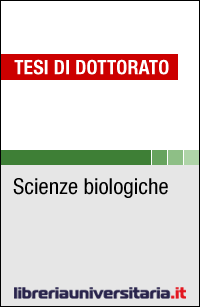
Never stop studying ips: The cell cycle genes regulation of ips cells and the role of swi/snf chromatin remodeling enzymes during their differentiation
- Tipologia:
Tesi di dottorato
- Anno accademico:
2012/2013
- Università:
Università degli Studi di Catania
- Lingua:
- Inglese
- Pagine:
- 190
- Formato:
- Protezione:
- DRM Adobe
- Dimensione:
- 6.00 Mb
Descrizione Never stop studying ips: The cell cycle genes regulation of ips cells and the role of swi/snf chromatin remodeling enzymes during their differentiation
The pluripotent cell state can be achieved by ectopic expression of few “magic” transcription factors that can reprogram somatic cells to achieve pluripotency (Takahashi and Yamanaka, 2006, 2007). One of the purpose of these studies is to identify which genes are modulated during the early stages of differentiation of ips cells. We analyzed the expression of relevant proteins that regulate the cell cycle by western blot such as cyclin a (cyc a), cyclin e (cyc e), cdk2, the family members rb (rb105, p130 and p107), the brm and brg-1 subunits of the complex swi/snf, histone deacetylases (hdac), msin3a and e2f family members. Our results show that the expression of cyclin a and cyclin e proteins are present in high quantities in undifferentiated ips cells and their expression increase at 1h and then decreases at 3h, 6h, 24h in ips cells induced to differentiate with retinoic acid (ra). In addition, we have found that the cyc e in ips cells is less abundant respect to es cells. This result was verified by western blot and as a further control, by realtime-pcr analysis. Interestingly, our immunoprecipitation data show that the interaction of brg-1-hdac-1 is strongly stimulated in the presence of ra treatment at 5um for 1h compared to the control samples. The undifferentiated es cells express brg-1 very weakly. Finally, our results also indicate the presence of un rb/id2 complex in undifferentiated es cells and ips cells. Another objectives of my thesis was to study the regulation of gene expression during the cyclic e1 "self-renewal" of mouse ips cells. The results of these studies confirm that during the differentiation of the es cells, a multiprotein complex binds to the promoter of cyclin e1 (cerm sequence) blocking the expression of this gene. Brefly, in ips cells treated with lif and ra the cerc2 complex is composed of p130-e2f4-cyce-rb proteins similarly to es cells. Regarding the experimental procedures for culturing and differentiating ips cells, I have obtained differentiated cardiomyocytes from embryonic bodies (ebs). Furtermore the facs analysis has shown that the number of cardiomyocytes was about 8% of the total cells in the ebs. My studies on the differentiative effect of ascorbic acid show that ips cells behave similarly to es cells. Ascorbic acid at final concentration of 50 g/ml has a stimulatory effect on the differentiation of ebs. Our results indicate that the treatment of ips cells with ascorbic acid induce the differentiation in cardiomyocytes. At molecular level, we have observed that the level of cyc a, cdk2 and oct 4 proteins is decreasing following this treatment. Finally, our results has revealed the importance cyclin e and rb/e2f pathway during the early stages of differentiation in both es cells and ips cells. In pluripotent ips cells and es cells induced to differentiate, the length of the g1 phase of cell cycle is greatly increases, and at the molecular level, the cyclin e/cdk2 kinase activity changed from the constitutive kinase activity in undifferentiated cells to a cell cycle-dependent activity during the early stages of differentiation. In addition, the regulated activities of the cyclin e/cdk2 complex results in the activation of the rb/e2f pathway which in turn regulates the cell cycle-dependent transcriptional control of e2f target genes. Overall, the results obtained in these studies supports the model that the cell cycle of es cells and ips cells abbreviated with a short g1 phase, is functionally linked to pluripotency. In conclusion, this study is of considerable importance for understanding the molecular mechanisms that control the unlimited capacity of self-renewal and differentiation potential of ips.



